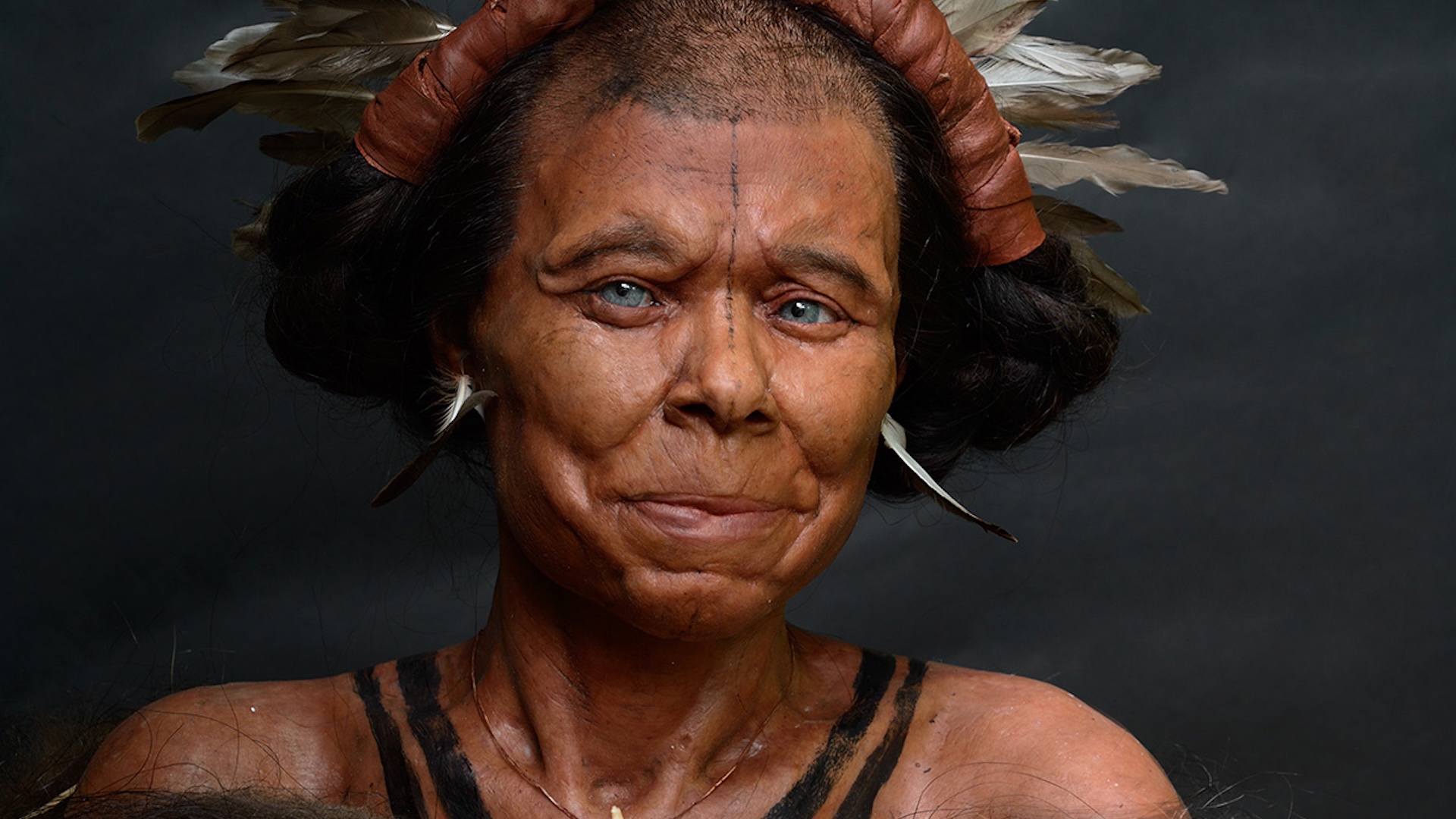See the stunning reconstruction of a Stone Age woman who lived 10,500 years ago in Belgium
The detailed reconstruction brings the prehistoric hunter-gatherer to life, revealing an intriguing set of features.

Researchers and artists have created a striking facial reconstruction of a Stone Age woman who lived roughly 10,500 years ago in what is now Belgium.
The detailed depiction of the prehistoric hunter-gatherer, known as the "Margaux woman," is based on various scientific data, including the remains of her skeleton and ancient DNA, according to a statement from Ghent University in Belgium.
The reconstruction — which was produced by the university's interdisciplinary Regional Outlook on Ancient Migration (ROAM) project, in collaboration with Dutch artists and twin brothers Adrie and Alfons Kennis — reveals an intriguing set of features.
ROAM research has indicated that the hunter-gatherer likely had blue or light eyes and a surprising "medium-toned" skin complexion, project leader Isabelle De Groote, a professor in the Department of Archaeology at Ghent University, told Live Science in an email. This skin tone appears to be slightly lighter than that of most other Western European individuals from the Mesolithic period (or Middle Stone Age) that scientists have studied so far.
Related: 45 amazing facial reconstructions, from Stone Age shamans to King Tut
Comparing her to other individuals who lived in roughly the same time period, such as the iconic Cheddar Man from England, reveals this "subtle but important" difference that highlights the variation already present in post-ice age Western Europe, De Groote said. "The skin pigmentation of the Margaux woman points to greater complexity of skin pigmentation within these populations and that it was more heterogenous than previously thought."
Cheddar Man belonged to the same Western European hunter-gatherer population as the Margaux woman, according to the statement. Previous research has suggested that he also had blue eyes, although his skin complexion is thought to have been slightly darker. Other members of this hunter-gatherer population shared a similar combination of dark skin and pale eyes.
Get the world’s most fascinating discoveries delivered straight to your inbox.

The Margaux woman
The remains of the female hunter-gatherer first came to light in 1988 during an excavation of the Margaux cave near Dinant, in Belgium's Meuse Valley region. At the time, the genetic analysis techniques that informed the new reconstruction were not available.The research team first scanned the woman's skull and created a 3D-printed reproduction, De Groote said. The Kennis brothers then used this printed version to model the muscle and skin of the head. They did this using anatomical standards for the region while taking into account the age of the woman. Based on features of her skull, the researchers estimated that she would have been between 35 and 60 years old when she died.
The team deduced her potential eye color and skin complexion using ancient DNA extracted from parts of her skull. They also considered the effect of suntanning to re-create her skin color, given that she likely lived a mobile, outdoor lifestyle.
Although facial reconstructions such as these can provide a fascinating window into the distant past, some elements are open to interpretation.
"Actual skin tone and eye colour is difficult to discern," De Groote said. "There is no exact answer in ancient DNA."

Aristos is a freelance science reporter who has previously worked for Newsweek, IBTimes UK and The World Weekly. He is particularly focused on archaeology and paleontology, although he has covered a wide variety of topics ranging from astronomy and mental health, to geology and the natural world. He holds a joint bachelor's degree in English and history from the University of Nottingham, and a master's from City St George's, University of London.
You must confirm your public display name before commenting
Please logout and then login again, you will then be prompted to enter your display name.
